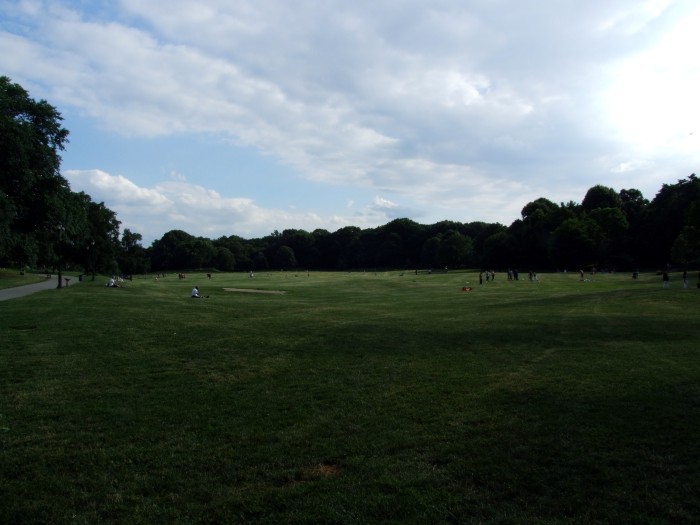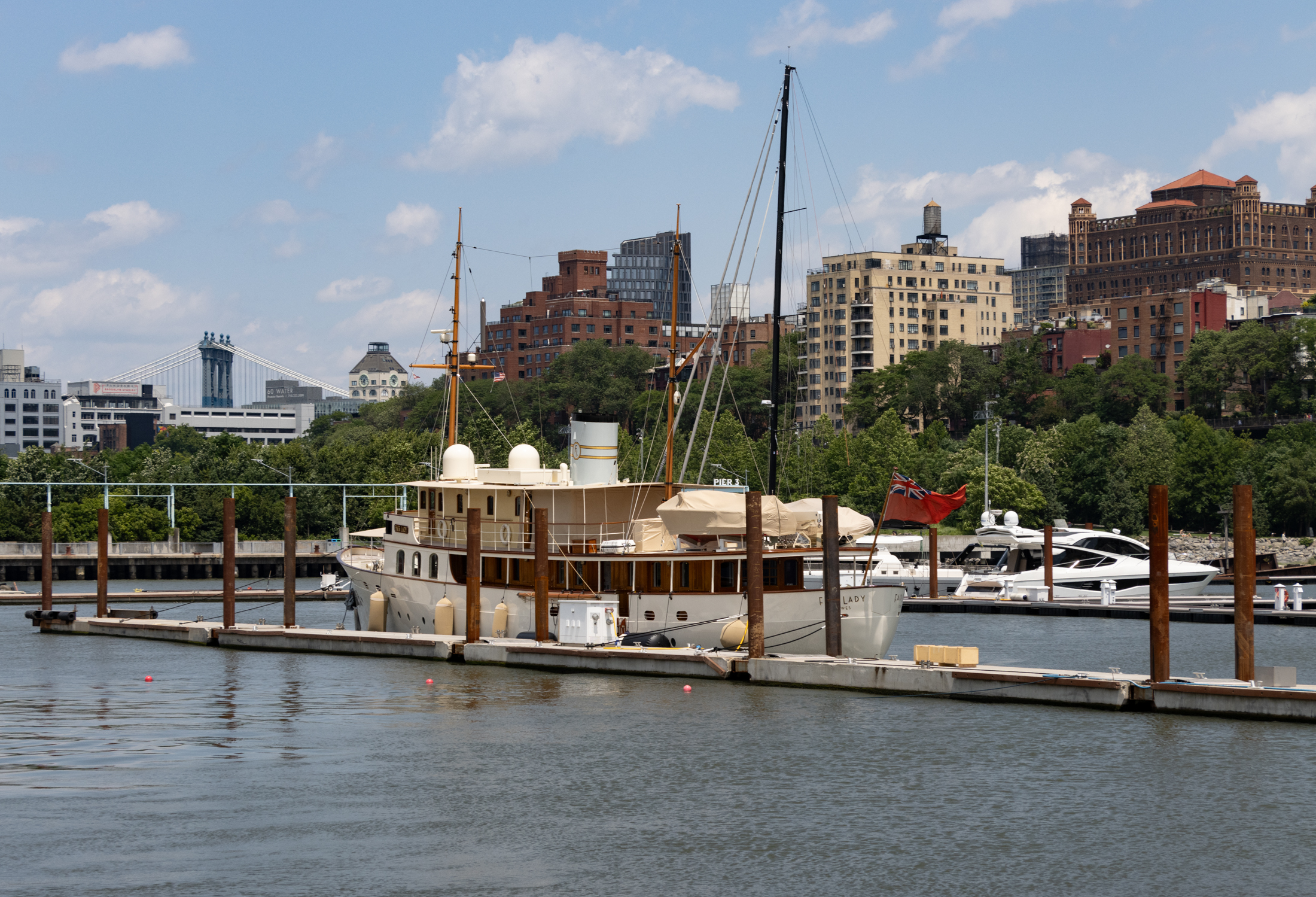Walkabout: Calvert Vaux, Architect, Part 2
Read Part 1, Part 3, and Part 4 of this story. The architectural and scenic wonders of France, Belgium and Germany have long been varied and great. In the summer of 1846, Calvert Vaux and his co-worker and friend, George Truefitt, left their London mentor, the great British architect Lewis Nockalls Coddingham, and embarked upon…


Read Part 1, Part 3, and Part 4 of this story.
The architectural and scenic wonders of France, Belgium and Germany have long been varied and great. In the summer of 1846, Calvert Vaux and his co-worker and friend, George Truefitt, left their London mentor, the great British architect Lewis Nockalls Coddingham, and embarked upon a Continental tour.
They spent the summer touring the great cities, and they wandered around in the verdant countryside, all the while sketching and painting the buildings, landscapes and vistas they encountered. When they returned to London that fall, George Truefitt published his sketches in a series of books which served to launch his career as an architect.
He would go on to surpass his master, Coddingham, and become one of England’s better known 19th century architects. Calvert Vaux was not as lucky, at least not in England. More details on his early years can be found in Part One of our story.
Vaux’s career was stalled. His mentor Coddingham was old and dying, and his business had been taken over by his only son, Nockalls Johnson Coddingham, who had also been trained as an architect. The younger Coddingham was jealous of his father’s apprentices, and with good reason.
He had very little talent, and even less business sense. Lewis died in 1847, and by 1851, Nockalls had blown several important commissions, and driven the business into the ground.
He was forced to sell his father’s pride and joy, a vast collection of medieval architectural artifacts, furniture and salvaged pieces; the legacy of a long career restoring England’s vast collection of Gothic and Medieval buildings. By that time, Vaux and Truefitt were long gone.
In 1850, taking a cue from his friend, Calvert Vaux entered his paintings and sketches of landscapes in a gallery showing in London, where they were well received. One of the guests at the showing was the great American landscape architect Andrew Jackson Downing, who was in England on a lecture tour.
He saw something in Calvert’s art; a keen talent for capturing the essence of a landscape, and an eye for depicting the best vantage point for displaying architecture in a natural setting.
This was the essence of Downing’s own work in the United States, where he was enjoying great success and renown as America’s premiere landscape architect, the “father” of the profession there. He also saw a talent going to waste.
Downing offered young Vaux a job, and by the end of 1850, Calvert Vaux was standing on the shores of the Hudson River, at Downing’s home in Newburgh, marveling at the beauty of the river and the vastness of his new home. It was finally time to get to work!
Downing had hired Vaux as the architect to complement his landscape design. The two men worked together seamlessly, with one of their first projects being the grounds of the White House and the Smithsonian Institution, in Washington DC.
Before long, Downing elevated Vaux from employee to full partner. Had their partnership continued, perhaps the great parks of New York would have been quite different, but tragedy struck.
In 1852, Andrew Jackson Downing died in a horrible fire aboard the steamboat, the Henry Clay, on a pleasure cruise up the Hudson. 80 other people also died that day, as an explosion and fire swept across the boat from the boiler room, consuming everything in its path.
Downing had accompanied his wife and members of her family on the cruise. The ship caught fire near Yonkers, and burned so fast and hot that only ashes and some of Downing’s clothing were ever found. He was only 37 years old. His shocked and devastated partner, Calvert Vaux, and their associate in the firm, Frederick Clarke Withers, carried on the business.
Although we associate Calvert Vaux with his landscape architecture, he was hired by Downing as an architect first. His early works in residential architecture were along the lines of Downing and A. J. Davis’ Gothic Revival style country villas, built for the wealthy businessmen whose properties lay in the gorgeous Hudson Valley.
First with Downing, and later on his own, Vaux created and popularized the Hudson River Victorian Gothic and Italianate Villa styles. Among them were villas for brewer Matthew Vassar, the Dodge family, and the early designs for Frederick Church’s Olana.
In 1857, Vaux published Villas and Cottages, a style book featuring fifty designs, solidifying the Victoria Gothic style. The book was hugely popular and influential, and has been reprinted as late as 1970.
Downing had been a great mentor and friend. His Newburgh home was often the site for gatherings of like-minded horticulturists, architects, and some of the painters in the new Hudson River School. At one of these gatherings, Calvert met a painter named Jervis McEntee, a budding young artist with a beautiful sister named Mary.
In 1854, Calvert and Mary married, and would end up having four children, two girls and two boys. Downing had been quite an unknowing matchmaker, because at one of these parties, Calvert also met a larger than life personality in the form of a horticulturist and gentleman farmer named Frederick Law Olmsted. Their partnership would be for the ages.
In 1856, Calvert and Mary Vaux left Newburgh and moved to New York City. That year Vaux also became an American citizen. His mentor, A.J. Downing, had often spoken of his desire to see a large park built in Manhattan, and Vaux took up the cause.
A plan for a park had been conceived by the Chief Engineer for Parks, Egbert L. Viele, but had been rejected by the committee in charge. Vaux was able to convince them to sponsor a competition for the park’s design, a competition that he intended to win.
He approached Frederick Law Olmsted, and convinced him that they should team up, and enter the completion together.
Olmsted, at that point, was well known as a travel writer and journalist. He had written about farming and horticulture, and had travelled to England, and written about that nation’s landscaping traditions.
In the 1850s, he was hired by the New York Daily Times, the precursor of the New York Times, to write about life in what became the pre-Civil War South, specifically as to the workings of the land.
His essays would be gathered into a three volume set, and were best sellers. (He was not a fan. He felt slavery had degraded not only the slaves, but the entire society. His observations were very astute and quite interesting.)
Vaux’s many conversations with Olmsted in Newburgh convinced him that Frederick Law was the man with whom he could succeed. Olmsted was not so sure.
He knew a great deal about plants, and had wonderful ideas about what such a park could look like, but he had no experience plotting out a park, or presenting his ideas to a committee. He also had no experience actually executing a landscape design.
But he was very well connected, and a passionate speaker. Vaux too could be very persuasive, and the two men agreed to enter the competition for Manhattan’s park.
Vaux called his idea the “Greensward Plan,” and he drew the plans and the sketches, which included extensive and imaginative “before and after” drawings.
The ideas for the park were in the grand tradition of Downing, with natural elements enhanced by architecture, in the form of bridges, promenades and other man-made structures, all designed by Vaux.
Olmsted was the plant man, and he brought his own artistry to the park in terms of painting the scene with the appropriate trees, shrubs and flowers.
Omsted also brought his ideas about the egalitarian nature of parks to their plan. Together Olmstead and Vaux came up with a park that knocked the socks off the judges, and they won the commission.
Olmstead was a better front man. He was passionate and outspoken, and much better connected, politically and socially. He was from well-to-do old American stock, a descendent of an American Revolutionary War veteran.
Even though Vaux was on a higher footing, experientially and probably in practical ideas, he was still a Brit in the eyes of many jaundiced New Yorkers, and so Olmsted rose to the top of the partnership, and in the popular eye, where he remains, even today.
They were equally talented in complementary ways, and had an excellent partnership. Central Park was only the beginning.
Construction of Central Park began in 1858, and was fully completed in 1873. Olmsted and Vaux were aided in the project by a team of men which included architect Jacob Wrey Mould, who designed Belvedere Castle and other park buildings, Ignaz Anton Pilat, the master gardener, engineer George Waring, and politician Andrew Haswell Green. It was an uphill battle all the way.
Petty bureaucracy hampered their progress daily, as did an ideological war over who the park was for. Eminent domain had claimed the land, and several small villages had been razed to build the park, which included communities of African Americans and poor English and Irish immigrants.
The city fathers wanted a fine park where the rich could promenade and socialize. Olmsted and Vaux designed the park so that everyone could enjoy it, rich and poor alike. Olmsted called it “a democratic development of the highest significance.” Both men had very strong reformist views.
Olmsted, as front man, was the subject of ire to the city’s Tammany Hall regime. He was fired for the first time in 1860, and was replaced by Andrew Haswell Green, who was able to keep the project moving and on schedule until Olmsted was brought back in.
Olmsted took his time off to act as Secretary to the U.S. Sanitary Commission, the precursor of the Red Cross. The Civil War had begun, which would take its toll everywhere, including in New York, where construction of the park slowed down as men were called to war. Olmsted was one of the six founding members of the newly formed Union League Club.
In 1865, the war ended. Central Park was not yet complete, but had opened, and was hailed as a work of genius by almost all. It was immensely popular and drew crowds of people to its pathways and attractions.
Across the river, the city fathers of Brooklyn looked at the beginnings of the park and wanted one too. A committee led by the Commissioner of Parks, George Stranahan, had begun to plan a large park in the center of Brooklyn.
Before the war, they had engaged Manhattan’s Park Engineer Egbert Viele to draw up plans for a new park to be called Prospect Park. It would ideally include two of Brooklyn’s most famous pieces of topography, Battle Hill and Mount Prospect, the highest points in Brooklyn.
The Revolutionary War had begun in New York, here in 1776, with the Battle of Brooklyn. Viele, still stinging from his ouster from the planning of Central Park, came up with a large park which included both points within its borders, cut in two by Flatbush Avenue.
The plan was accepted, but then came the Civil War, and it was back burnered. When the war ended, the plans for Prospect Park were slated to begin again. Viele was probably elated to have his park realized. But what did Stranahan do? He brought in those meddling interlopers Olmsted and Vaux. Perfidy!
Next: Prospect Park and beyond.
(Photograph:Suzanne Spellen)





What's Your Take? Leave a Comment